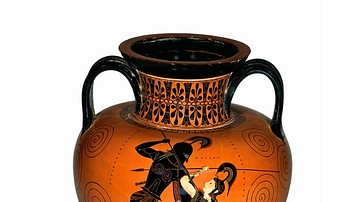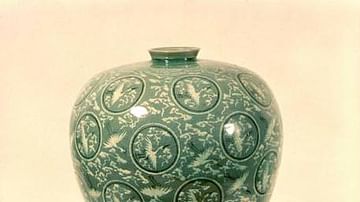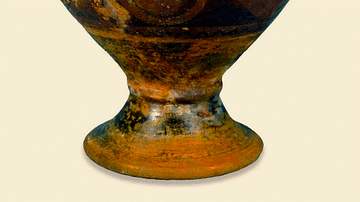We know the names of some potters and painters of Greek vases because they signed their work. Generally a painter signed his name followed by some form of the verb 'painted', while a potter (or perhaps the painter writing for him) signed his name with 'made'. Sometimes the same person might both pot and paint: Exekias and Epiktetos, for example, sign as both potter and painter. At other times potter and painter were different people and one or both of them signed.
However, not all painters or potters signed all their work . Some seem never to have signed their vases, unless by chance signed pieces by these craftsmen have not survived.
Even in the case of unsigned vases, it is sometimes possible, through close examination of minute details of style, to recognize pieces by the same artist. The attribution of unsigned Athenian black- and red-figured vases to both named and anonymous painters was pioneered in the twentieth century by Sir John Davidson Beazley. Other scholars have developed similar systems for other groups of vases, most notably Professor A.D. Trendall for South Italian red-figured wares. For ease of reference Beazley and the others gave various nick-names to the anonymous painters whom they identified. Some are called after the known potters with whom they seem to have collaborated - the Brygos and Sotades Painters, for example, are named from the potters of those names. Other painters are named from the find-spot or current location of a key vase, such as the Lipari or Berlin Painters. A few, such as the Burgon Painter, take their names from former or current owners of key vases. Others are named from the subjects of key vases, such as the Niobid, Siren or Cyclops Painters, or else from peculiarities of style, such as The Affecter or Elbows Out Painters.






